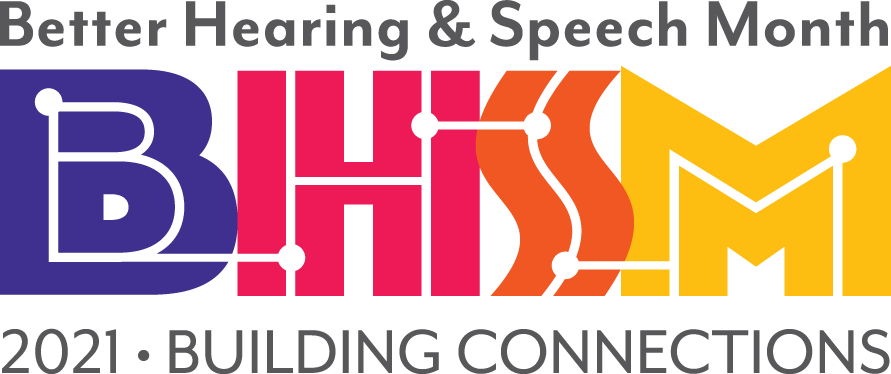 Each May, Better Hearing & Speech Month (BHSM) provides an opportunity to raise awareness about communication disorders and the role of ASHA members in providing life-altering treatment. For 2021, our theme is “Building Connections.” This year, Hearing and Audiology Services is focusing on the importance of early intervention for communication disorders.
Each May, Better Hearing & Speech Month (BHSM) provides an opportunity to raise awareness about communication disorders and the role of ASHA members in providing life-altering treatment. For 2021, our theme is “Building Connections.” This year, Hearing and Audiology Services is focusing on the importance of early intervention for communication disorders.
Many parents question their child’s speech, language, or social communication skills but are often told by family, friends, or even other professionals to wait and see if their child outgrows a potential problem. Unfortunately, this waiting can often result in a delayed diagnosis of a disorder that is highly treatable—particularly when caught early. With speech and language disorders among the most common conditions that young children experience, the team at Hearing and Audiology Services is encouraging parents and caregivers to learn the signs of communication disorders and seek an evaluation now if they have any concerns. It’s more important now than ever, as some children who traditionally would have been recommended for speech and language services by a daycare provider, teacher, or pediatrician may have been missed due to the pandemic.
Here are some signs of a speech or language disorder in a young child (age 3 and under):
- Does not smile or interact with others (birth and older)
- Does not babble (4–7 months)
- Makes only a few sounds or gestures, like pointing (7–12 months)
- Does not understand what others say (7 months – 2 years)
- Says only a few words (12–18 months)
- Says words that are not easily understood by others (18 months – 2 years)
- Does not put words together to make sentences (1.5–3 years)
- Produces speech that is unclear, even to familiar people (2–3 years)
Here are some of the key benefits of early treatment:
- Maximizes a child’s success. Treatment at any age is worthwhile, but earlier is usually most effective. Early treatment can reduce the need for school-based services later.
- Saves time and money. It can take less time to treat a communication delay or disorder when families act on the early warning signs. Fewer treatment sessions can also mean fewer out-of-pocket expenses. Many early intervention programs offer free or low-cost services to children ages birth to 3 years and their families. They also can link you to other community supports.
- Prepares a child for kindergarten. What happens between birth and age 3 lays the foundation for kindergarten readiness. Strong speech, language, cognitive, and social skills are necessary for reading, writing, and academic success—as well as all the other demands of school.
- Sets a child on a course to school, social, and life success. All families want what’s best for their children. Acting early can have positive, long-lasting effects on your child’s communication, social relationships, learning, and daily life activities well into adulthood.
The bottom line is that families should seek help immediately if a child shows signs of a speech or language delay or disorder. Learn more about the benefits of early identification and treatment at www.IdentifytheSigns.org or contact us if you would like to schedule an evaluation for a child.

